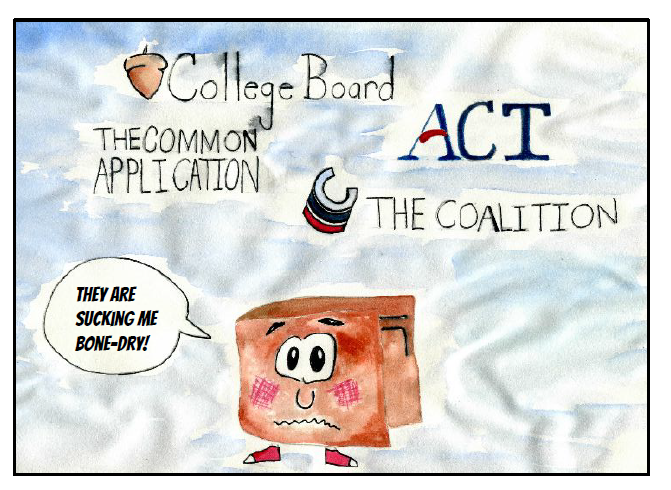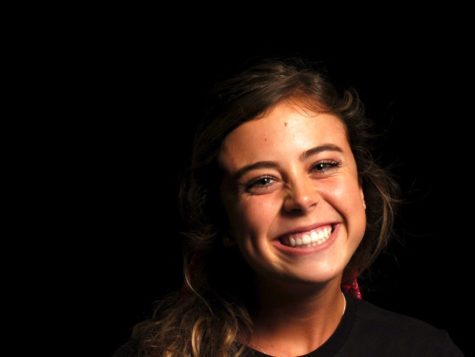A Monopoly in Disguise
February 5, 2019
College: a topic every high schooler grows to despise at one point or another. From the start of their high school careers it is ingrained in students’ minds that they must prepare for college.
Whether it be through Advanced Placement (AP) courses, extracurriculars, four years of a sport, standardized tests (SAT/ACT), it is all done with the purpose of boosting their high school resumes- anything to make them look good on a piece of paper, right?
This societal expectation is flawed in nature when considering the fact that it has grown into a monopoly that thrives off of the checks of high school students. When looking at how much is spent by the average high schooler on college preparatory by the time they graduate, this puts this twisted business in a new light.
The first step in this process is AP testing. This generally begins sophomore year, each test costing $100. Most high schoolers take multiple in the duration of their high school career. When considering prep books and exam fees, one might spend between $300 and $1,000 on AP testing by the time they finish their senior year.
Next comes standardized testing: both the SAT and ACT cost roughly $50 each. From junior to senior year, students may take one or both of these tests multiple times. Many choose to invest in tutors, courses, and prep books to raise their score. When they finally earn a score they are content with, they may have just poured $800-$3,000 down the drain depending on how many tests they took, and the cost of tutor they selected.
Finally, college applications: students’ last obstacle in their high school journey. Before coasting through senior year, they write essays upon essays to submit to schools. Each application can cost anywhere from $50 and $100 to submit.
On top of that, business, dental, law, nursing, and many other schools may require separate essays and applications which cost even more money. Whether they hire a college counselor, essay help, or a financial advisor, students are spending the most time on this phase of the process.
Those with a lower income, however, are at a disadvantage once again, when it comes to college applications. Middle-to-upper class students are able to hire far more expensive counselors or tutors to perfect their essays, and provide an extreme makeover- college app edition.
Breaking all of that down, the average student might spend $2,000-$4,000 on their road to college, and that is on the low end of the spectrum.
Students realize that in order to be deemed as the perfect applicant in the eyes of college admissions, they must have an above average GPA, countless hours of community service, high standardized test scores, superb college essays, and so much more. This expectation also costs students their mental well-being on top of too much of their money.
In a world where money is everything, companies such as College Board, ACT, Common Application, Coalition, and more thrive off of this process that the majority of high schoolers find themselves sucked into.
A stage of life that should be centered around growth and the abilities of each student has been turned into one that is determined by how much money is in a bank account. The more AP tests, the better the college application looks, and the more of mom’s and dad’s Benjamin Franklin’s go to College Board.
The same can be said for standardized testing. With greater exposure to the test, students tend to score higher. This, however, means paying for the test each time. And if the student is taking the test over and over, odds are that they are paying for more tutoring and testing materials each time as well.
Finally, once the agony of all that testing is done, college essays come into the picture. It is in this stage of the process that the playing field is anything but leveled.
This proves that students with greater financial comfortability have a greater chance at admission into the more competitive universities. This skews the process in the favor of those with more money to spend on college preparation, and discriminating against those who aren’t as economically capable.
Though the process is flawed, it is what students must endure in order to receive a higher education. All you really need to get to college is brains and bills- but with an emphasis on the latter half.


